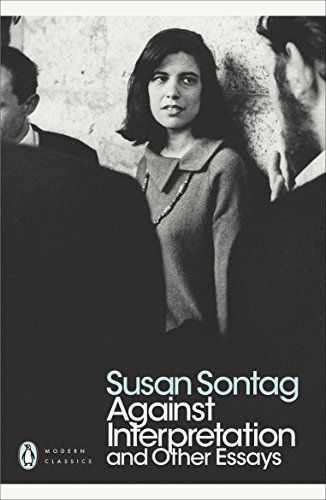
Against Interpretation and Other Essays
'A dazzling intellectual performance' Vogue Against Interpretation was Susan Sontag's first collection of essays and made her name as one of the most incisive thinkers of our time. Sontag was among the first critics to write about the intersection between 'high' and 'low' art forms, and to give them equal value as valid topics, shown here in her epoch-making pieces 'Notes on Camp' and 'Against Interpretation'. Here too are impassioned discussions of Sartre, Camus, Simone Weil, Godard, Beckett, Lévi-Strauss, science-fiction movies, psychoanalysis and contemporary religious thought. Originally published in 1966, this collection has never gone out of print and has been a major influence on generations of readers, and the field of cultural criticism, ever since. 'Sontag offers enough food for thought to satisfy the most intellectual of appetites' The Times
Reviews
Ana Hein@anahein99
elif sinem@prism
Lindy@lindyb
savannah eden@savbrads
Cat Josephson@themorrigan12
Patricia lee@plee
Mark Porter-Smith@markportersmith
Thalia @thalia24
Trever@kewlpinguino
Emily Morgan@e333mily
Ana@anaaniri
Bee@tomatobeep
Brianna Best@bookingitwithbri
Dew@iamdew
Anna Talbot@sontagspdf
Amro Gebreel@amro
Highlights
Nathan Johnson@nathan
Page 50
Nathan Johnson@nathan
Page 36
Nathan Johnson@nathan
Page 26